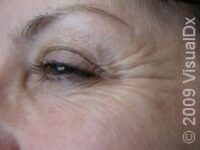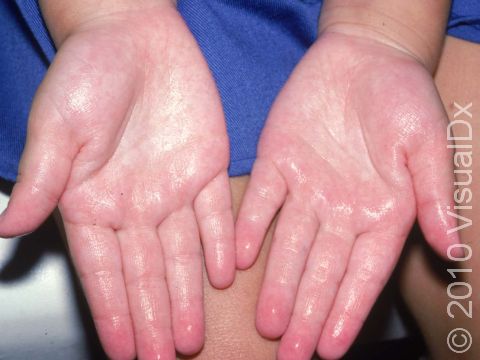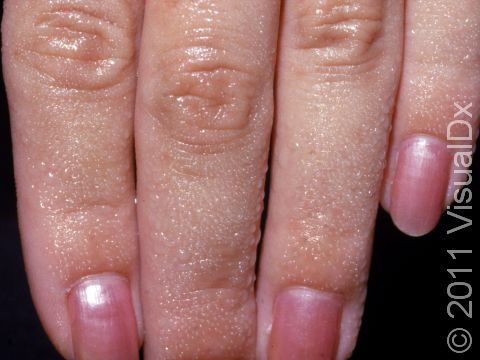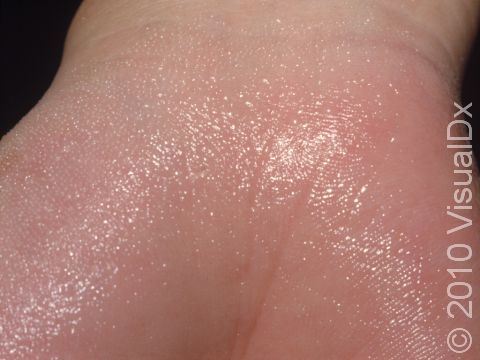
Excessive Sweating (Hyperhidrosis)
Hyperhidrosis, the medical name for excessive sweating, involves overactive sweat glands, usually of a defined body part, including the palms, soles, forehead, or underarms. Rarely, hyperhidrosis can be generalized, affecting the majority of the skin. This condition can be quite debilitating, depending on the extent and location of the symptoms. Social and business interactions can be affected, for instance, if hyperhidrosis affects the hands and individuals avoid hand shaking due to sweaty palms. Excessive sweating can cause individuals to avoid public speaking engagements for fear of embarrassment of sweating in front of an audience.
Who's At Risk?
Excessive sweating most often presents in childhood or adolescence, although it can be observed in adults as well. In up to half of patients, there may be a family history of this condition.
Signs & Symptoms
Excessive sweating can develop during certain emotional states, such as under stressful conditions, or in association with certain medications.
Self-Care Guidelines
Treatment progress can be made if inciting factors that lead to hyperhidrosis (certain foods, medications, or stressful situations) are identified and avoided. Use of over-the-counter antiperspirants can be helpful to decrease the amount of sweating. New “clinical strength” antiperspirants are now available (Secret®, Dove®) over the counter, which have been helpful for self-treatment. Additionally, there are products designed specifically for use on the feet (Certain Dri® Feet Moisture Control Pads, Certain Dri Feet Microsponge® Powder). Use of antiperspirant/deodorant combinations can help with the prevention of odor. Wearing natural fabrics, like cotton socks, can help to wick away moisture from areas of sweating and allow for faster drying of the skin.
Treatments
There are several common treatments that can be tried to effectively reduce the impact of symptoms of excessive sweating, including the following:
- Topical aluminum compounds (Drysol™, 20% aluminum chloride) – Act by blocking (occluding) the sweat gland.
- Glycopyrrolate – An oral medication that blocks molecules involved in signaling between the nervous system and the sweat glands.
- Oxybutynin – Another oral medication that blocks molecules involved in signaling between the nervous system and the sweat glands.
- Iontophoresis – Involves the passage of electric current into the skin, thereby disrupting the functioning of the sweat glands. This is most easily used for the palms and soles. Home units can be purchased for use within the home.
- Botulinum toxin injection (Botox®) – Used to inhibit signaling between the nervous system and the muscle fibers found in the sweat glands.
- Sympathectomy – A surgical procedure used as a last attempt to get control of symptoms. The nerves of the sympathetic nervous system (those that govern the sweating behavior) are cut to reduce symptoms. Unfortunately, side effects such as excessive sweating in previously unaffected areas (known as compensatory hyperhidrosis) can result.
Visit Urgency
Consultation with a physician should be sought when over-the-counter antiperspirants/deodorants are not effective in controlling symptoms. If symptoms are debilitating, causing major lifestyle changes to avoid developing symptoms or fear or embarrassment, patients should seek consultation with a dermatologist.
Last modified on October 5th, 2022 at 7:33 pm

Not sure what to look for?
Try our new Rash and Skin Condition Finder


